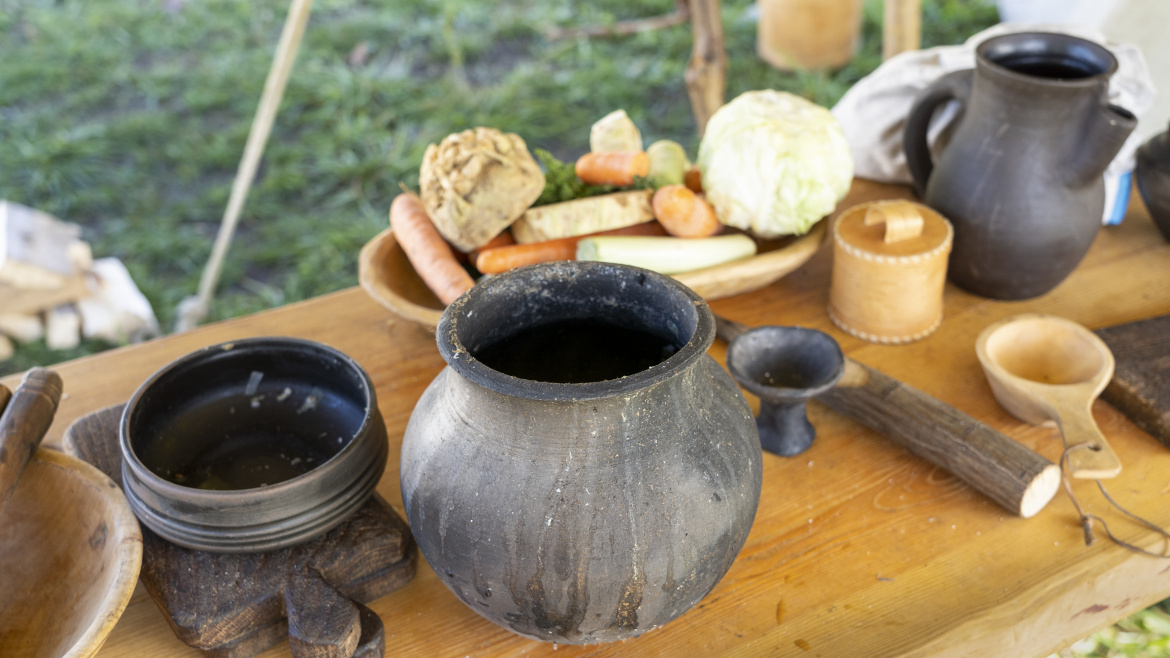
Stary lud – an encounter with the ancient people
Group offers from 10 persons:
You can choose one project module from area A and one from area B.
Project module C can optionally be used as a stand-alone project or combined with a module from area B.
A project module lasts about 45–60 minutes so that a project day including a guided tour has a scope of about four teaching periods (3 hours total).
Module area A
Archaeology workshop
In this workshop, the pupils can slip themselves into the role of archaeologists. Finds are excavated, drawn and identified. This way, the children/young people learn about the importance of archaeological research and the exciting stories it can tell.
Pottery
We shape objects out of clay according to historical models. Vessels, medieval toys or animals are created. Imagination has no limits. Of course, the children/young people can take their works of art home with them.
Fire making
The ability to make fire was and is important for human survival. But how did people solve this task in the early Middle Ages? How was fire handled? Under supervision, the pupils can slip into the role of the "fire beater" themselves and try to make fire.
Leather processing
Leather is an important material in the history of man. We will make historical leather bags, which the students can of course take home. For this module there is an additional fee for material of € 1.50 or € 2.50 (depending on the size of the bag).
Weaving
How are fabrics actually made? In this course, the pupils learn the basics of textile processing. Afterwards, they have the opportunity to try out this craft themselves and weave a colourful woollen belt, for example.
Module area B
From grain to flour to bread
Food made of grain has been elementary for many humans for a long time. But how do you get from grain to bread? In this workshop, students will grind grain by hand and then bake it as flatbread or ash buns. Along the way, they learn interesting facts about the history of grain.
Food in the Slavic Middle Ages
What kind of food was eaten? What was prepared from it? Do you know the types of grain? All these questions will be answered in this project. The children/young people prepare their own soup and flatbreads on an open fire. A very tasty project.
Module area C
Information follows!
